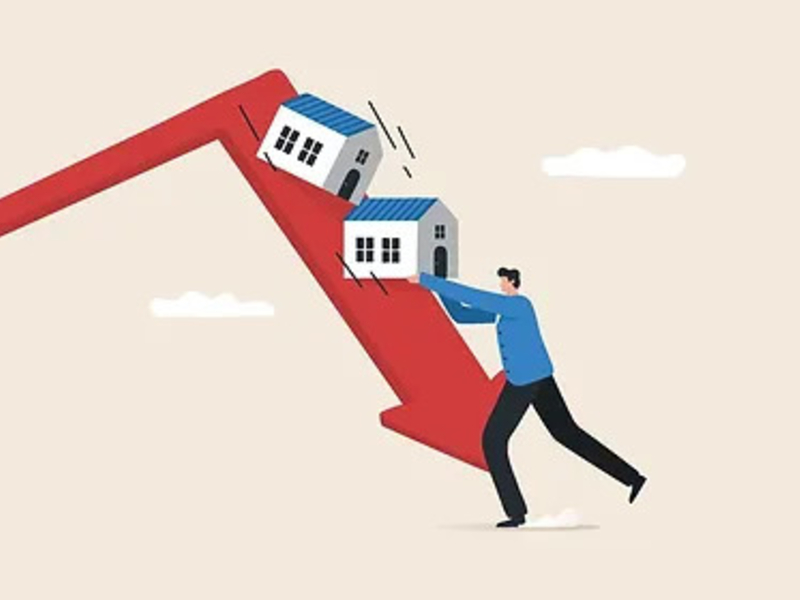The COVID-19 pandemic was not merely a public health emergency; it also had profound effects on the commercial real estate market. Lockdowns, social distancing measures, and a significant rise in e-commerce dramatically transformed our ways of working, shopping, and socializing.
The pre-panemic CRE market
Before the pandemic, the commercial real estate market was flourishing. There was strong demand for office, retail, and industrial spaces, yielding substantial returns for investors. In many major cities, a shortage of available commercial properties drove up prices and rents. Companies were leveraging low-interest rates to acquire commercial properties as long-term investments.
Pandemic’s Impact
The Sectors that were hit the hardest-
- Offices: Lockdowns triggered a global experiment in remote work, revealing that it was not only feasible but also productive for many companies. Consequently, demand for traditional office space has significantly declined. City centers, once vibrant, now face vacancy rates unseen in decades. A McKinsey report found that rents in major cities such as New York and San Francisco have plummeted by as much as 28% since 2019. The future of office space is likely to follow a hybrid model, with businesses requiring less square footage and opting for shorter, more flexible leases. Landlords are rethinking their strategies, offering amenities like co-working spaces and enhanced conference facilities to attract tenants who value collaboration and community.
- Retail: The pandemic hastened the e-commerce boom, putting additional pressure on traditional brick-and-mortar stores. Malls, once bustling social hubs, now face high vacancy rates, with the average retail vacancy rate reaching 4.4% in the second quarter of 2022. However, the future of retail isn't entirely grim. Stores that offer unique experiences or cater to specific needs continue to thrive, including local boutiques, experiential showrooms, and fitness centers.
- Hospitality: The COVID-19 pandemic had a devastating impact on hospitality real estate, causing significant financial strain and forcing many businesses to adapt. Travel restrictions and lockdowns led to a dramatic drop in occupancy rates, with many hotels either closing entirely or operating with minimal staff. Revenue per Available Room (RevPAR), a key industry metric, plummeted as demand for rooms disappeared. Hotel owners faced severe financial difficulties, struggling to meet mortgage payments and keep properties afloat, with some forced to sell their assets at a loss. To survive, hotels implemented cost-cutting measures such as furloughs, layoffs, and reduced services. The sector has, however, recovered.
The Silver Lining-
- Warehousing: While some sectors struggled, the industrial real estate market experienced a boom. The surge in online shopping fueled the demand for warehouses and fulfillment centers, as businesses needed space to store inventory, manage efficient distribution networks, and meet the growing demand for fast delivery. This trend is likely to persist as e-commerce continues to dominate the retail landscape.
- Multifamily: The pandemic surprisingly strengthened the multifamily real estate sector. Unlike offices and retail stores, which suffered from closures, apartments remained stable investments. High demand persisted due to a shift towards renting, particularly among millennials, and a limited supply of new units. Government stimulus also helped renters pay their rent. Despite challenges in rent collection, multifamily properties weathered the economic storm better than most.
- Single Family Homes & Condos: The pandemic increased demand for single-family homes and spacious condos, as remote workers sought extra rooms for offices and backyards. Lower interest rates and remote work options boosted suburban property values. While some urban condo markets thrived, they generally couldn't match the appeal of private yards and flexible locations of single-family homes.
The Future Ahead
The pandemic has reshaped the commercial real estate market, and these changes are expected to endure for the foreseeable future.
- Office: Looking forward, the trajectory of commercial real estate will probably be influenced by a hybrid work model. Numerous companies are adopting a blend of in-person and remote work setups, necessitating versatile office spaces. Landlords are anticipated to respond to this shift by providing flexible leasing options, communal workspaces, and office setups geared towards fostering collaboration and creativity.
- Retail: The retail industry is experiencing a notable evolution. Although e-commerce is poised to maintain its growth, brick-and-mortar stores must enhance their experiential offerings to remain competitive. This might entail developing interactive showcases, integrating entertainment features, or prioritizing personalized customer experiences.
- Sustainability: As individuals gradually resume their routines in offices and communal areas, there will likely be an increased focus on incorporating elements that support health and wellness. This encompasses access to natural light, enhanced ventilation systems, and facilities that promote physical activity. Moreover, sustainability is emerging as a pivotal consideration for occupants, with a rising desire for energy-efficient structures equipped with eco-friendly attributes.
- Industrial: The industrial domain is anticipated to sustain its robust performance, driven by the increasing need for warehousing and logistics infrastructure. Investors might find it beneficial to prioritize this asset category and also explore ESG (Environmental, Social, and Governance) initiatives, which could influence forthcoming real estate investment decisions.
To conclude, The COVID-19 pandemic has certainly made its impact felt across the commercial real estate sector. Yet, it has also paved the way for innovation and adaptation. Through embracing flexibility, prioritizing enriching experiences, and emphasizing wellness and sustainability, the industry can successfully navigate this evolving landscape and emerge even stronger.
Trending





